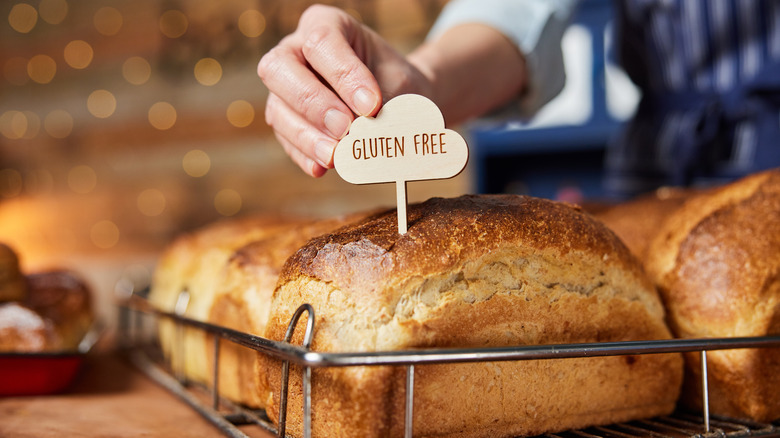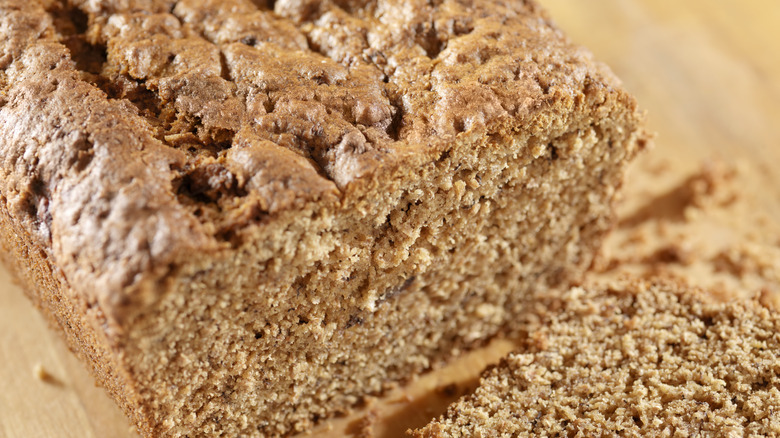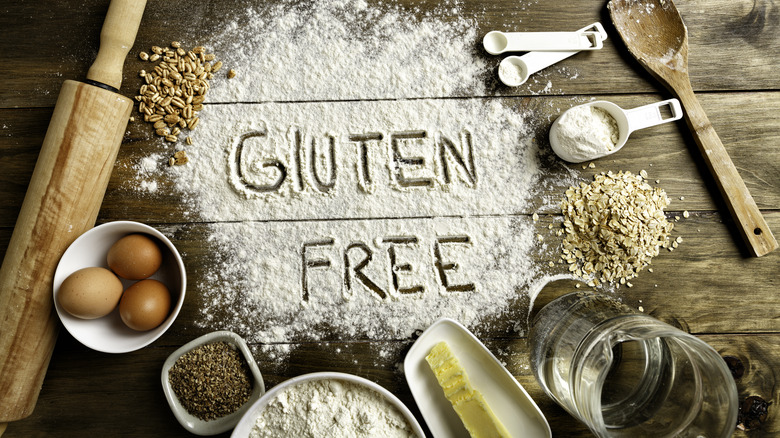The Reason Gluten-Free Bread Is So Expensive
According to a 2021 study published in Appetite, an estimated 20-30% of Americans avoid gluten in their diet. In many instances, this avoidance is due to medical conditions like celiac disease or wheat allergies. For others, it's a dietary preference. In either case, opting for gluten-free products generally translates to significantly higher price tags.
Gluten-free bread serves as a prime example, with its costlier price compared to gluten-containing bread attributed to various factors, including manufacturing costs. For instance, gluten-free flour can cost about twice as much as traditional wheat flour. Additionally, the absence of gluten, a natural binder, necessitates the inclusion of extra ingredients such as starches and thickeners to ensure the bread maintains its structure.
Supply and demand also play a critical role. Gluten-free bread is not produced at the same scale as its gluten-containing counterparts, meaning manufacturers don't benefit from the same volume discounts from suppliers. So, producers typically incur higher costs for ingredients, and must invest more in quality control to adhere to allergen-free standards. While competition between brands typically results in lower prices, the gluten-free market's limited number of competitors means that consumers generally don't see the same price advantages.
How much more does gluten-free bread cost?
A 2023 study published in The Journal of Allergy and Clinical Immunology examined the price differential between gluten-free products and those containing gluten, using price data from five major U.S. supermarket chains. The study found that, for both gluten-free bread and pasta, the least expensive gluten-free options were significantly pricier than their gluten-containing counterparts. Gluten-free pasta costs about 2.7 times more per ounce than mass-marketed pasta, while gluten-free bread is almost 4.6 times more expensive than traditional wheat bread.
Similarly, Coeliac UK's Cost of Living Report from March 2023 highlighted the economic challenges of maintaining a gluten-free diet. In the U.K., gluten-free bread costs more than four times as much as traditional bread, and this figure rises to around seven times when comparing the most affordable options. Additionally, gluten-free products like pasta are typically double the price of their alternatives. These heightened costs mean that gluten-free shoppers spend as much as 20% more per shopping trip, leading to an increased cost of living. There's an additional time cost, too. The frequent out-of-stock status of gluten-free items compels the majority of gluten-free shoppers (84%) to visit multiple stores to find the necessary products.
Shopping tips for gluten-free products
What can individuals with gluten sensitivities do to mitigate the high costs of gluten-free products? Several budget-friendly strategies can be employed, starting with making your own gluten-free bread at home (a tip: use carbonated water). Prioritizing naturally gluten-free foods is also advisable. Fresh fruits and vegetables, for instance, do not contain gluten, nor do fresh cuts of meat, soy, oats, and beans. Eggs are another basic food item free from gluten, as are unprocessed dairy products such as milk, cheese, and yogurt. Grains like brown rice, wild rice, buckwheat, millet, and quinoa are also gluten-free.
Conversely, cereals, pasta, pizza, and bread typically contain gluten — pita bread is not an exception. Many other less obvious products might contain gluten due to additives or other ingredients. Flavor additives, for instance, often trigger gluten-related concerns. Candies and snacks such as potato chips invariably contain gluten — though making homemade potato chips is a workaround — as do many soups, sauces, and cured meats. Even non-food items like toothpaste and vitamins might contain gluten. Indeed, gluten-free toothpaste tends to be pricier than its regular counterpart.
Purchasing in bulk is an effective strategy to reduce expenses on gluten-free items. Waiting for items to go on sale also promises savings, as does replacing expensive gluten-free pasta with rice or corn.



